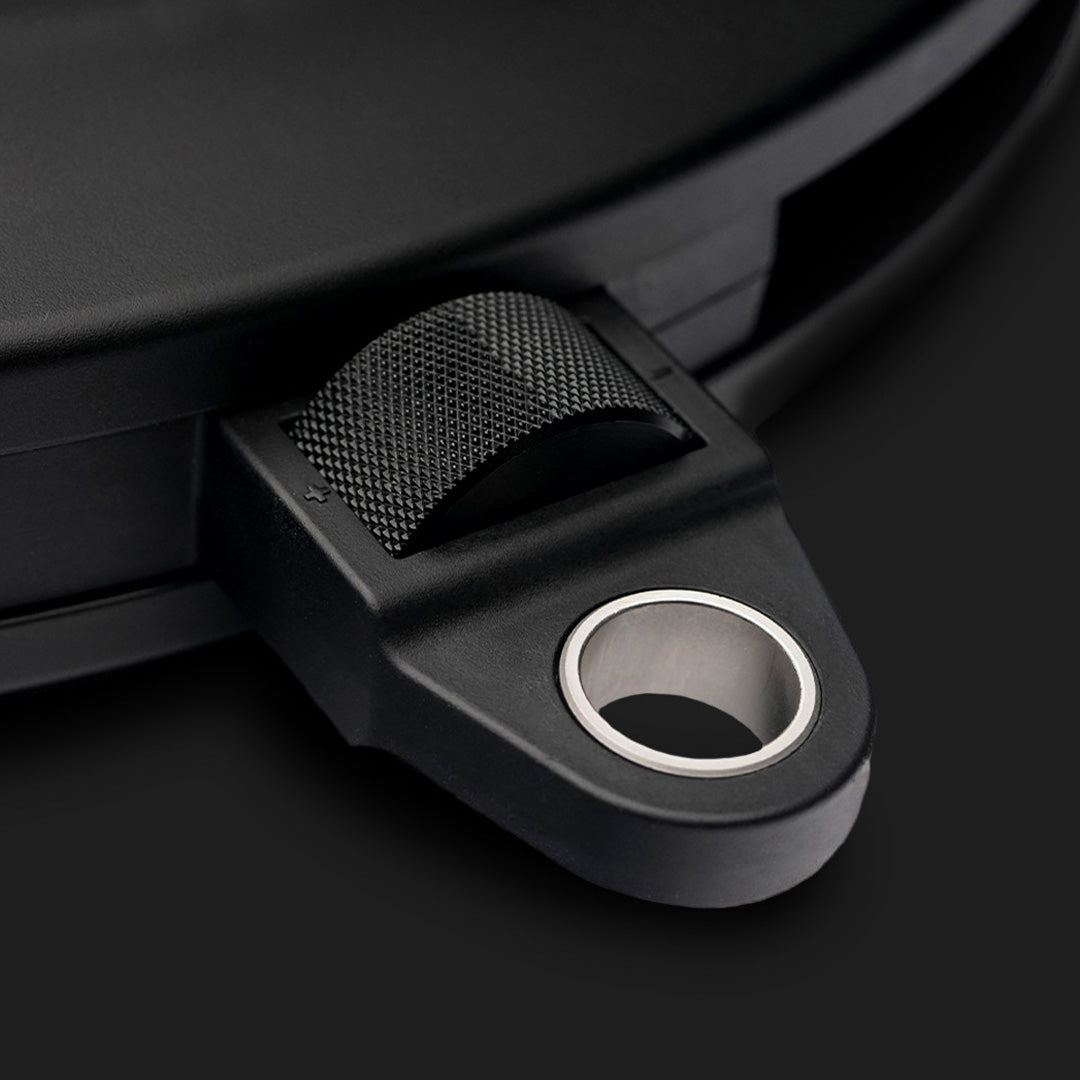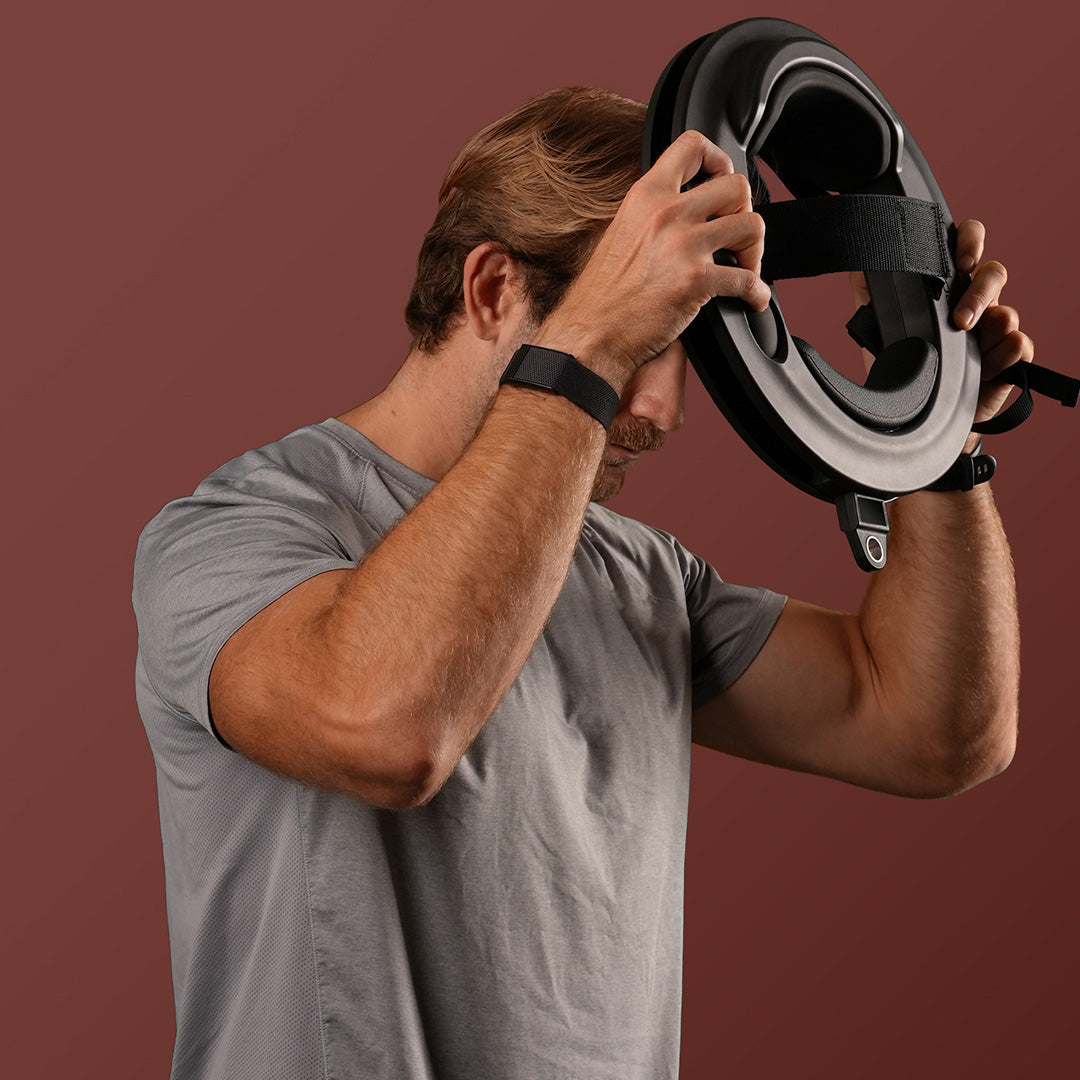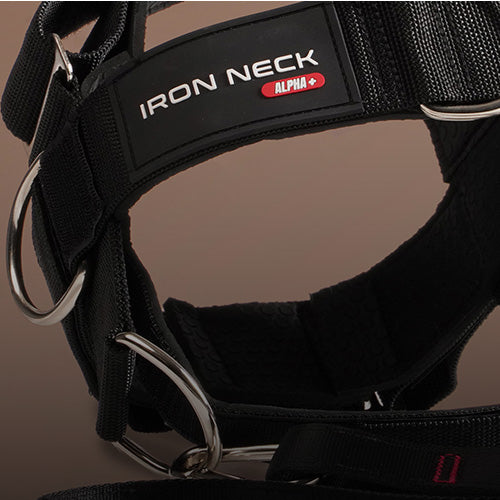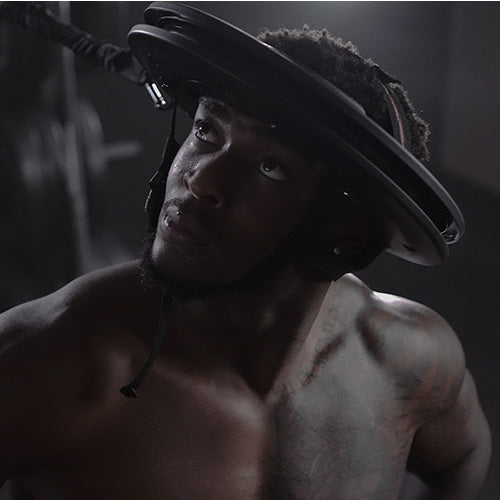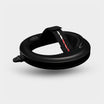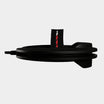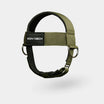Iron Neck has its roots in football, wrestling and combat sports, but as more coaches use it, the more sports benefit from neck training and development. Track & field, tennis and baseball are prime examples of where neck training needs to go next.
Like a lot of Iron Neck users, Ivan Candelaria came to the Iron Neck as a way to strengthen his football players' necks to lower the risk and severity of concussions. And like many users, it wasn't long before he found himself asking "What else can I do with this thing? What other movements can we train with it?"
We've been talking about the same thing around Iron Neck's HQ over the last few weeks: What other sports would benefit from training with the Iron Neck, why and how? We'll light the convo off here, but then you need to tell us what "other" sports you've used the Iron Neck in, or what sports are on your "to train" list.
Tennis: Neck strength to keep your eyes on the ball
Any movement in the reach-swing-throw family of movements uses the neck muscles to align and stabilize the shoulder girdle, to contribute to rotator cuff mobility and to ensure the head is in the right position to track the movement of whatever you're reaching for, swinging at or throwing to.
Tennis players have to swing while decelerating, often from lateral movement, while keeping their eyes on a ball travelling over 100 mph. Tennis players start their backswing while decelerating, and are still riding the brake when they bring the arm forward into the hit. As their body moves in all three planes, their neck and chin have to stay relatively stationary: eyes on the ball.
Candelaria recreates as much of this sequence as he can while an athlete is wearing theIronNeck. He attaches the Iron Neck to a cable machine, which lets him set the right height for the right angle of pull, then has the player side shuffle and swing. The Iron Neck provides tension to the neck so they learn to maintain head and gaze alignment while the rest of their body executes an accelerating swing during a decelerating shuffle.
Baseball: Pitchers and catchers (and batters) report!
After tennis, baseball should be pretty obvious, right? Batters are in a similar situation as tennis players: they have to keep their head aligned over a rotating body so they can track and make contact with a ball coming towards them at high speed. If you really want to set things off, you could even say that batters have it a lot easier: the ball always comes at them from the same angle, they have the benefit of a static start, and their movement is more limited to the transverse plane.
Likewise, pitching is a lot like serving in tennis. Seated or standing throwing drills while holding a football tight to their glove side, with the Iron Neck pulling to one side, teaches pitchers how to not "take their head out of the throw." By keeping the head in line with the shoulder girdle and the rest of the body, the pitcher protects his arm from being too straight while at its point of greatest instability during delivery. This reduces the shearing forces that contribute to the UCL injuries that knock out so many pitchers, especially young ones who are increasing their volume and velocity.
But catchers? Catchers experience more direct neck trauma than any other player on the diamond. What do catchers do when the batter pops one straight up or knocks the ball into the dirt right in front of the plate? They wrench off their mask with complete disregard for the head and neck the mask protects. Whether they go into cervical hyperextension to look for the ball in the sky or crouch and scramble forward to pick it up, they first pull the neck forcefully back via the mask as they try to clear their sightline. A strong and mobile neck will make them better able to withstand this self-inflicted strain.
Added bonus: catchers rely on their neck and shoulder muscles more than throwers in any other sport, simply because they take their lower body and torso out of the kinetic chain by throwing from a squat position. A stronger neck will preserve those muscles so they can contribute to throwing a bullet to second on a steal.
But catchers? Catchers experience more direct neck trauma than any other player on the diamond. What do catchers do when the batter pops one straight up or knocks the ball into the dirt right in front of the plate? They wrench off their mask with complete disregard for the head and neck the mask protects. Whether they go into cervical hyperextension to look for the ball in the sky or crouch and scramble forward to pick it up, they first pull the neck forcefully back via the mask as they try to clear their sightline. A strong and mobile neck will make them better able to withstand this self-inflicted strain.
Added bonus: catchers rely on their neck and shoulder muscles more than throwers in any other sport, simply because they take their lower body and torso out of the kinetic chain by throwing from a squat position. A stronger neck will preserve those muscles so they can contribute to throwing a bullet to second on a steal.
Sumo: The world's oldest concussion epidemic?
Pound for pound and newton for newton, the collisions in sumo wrestling are unlike anything in sport. Collisions are a part of the game in football and rugby, but they are the game in sumo.
Many of those collisions are head-to-head, on purpose. As former sumo wrestler and commentator John Gunning told The Guardian:
“It’s still very much old school, going in hard and head first. The sound of two heads cracking together like coconuts is a common one in a sumo training session. What you see in a tournament is only a fraction of what goes on.”
If you're not sure (a) why that's a problem and (b) how neck strength figures in to it, catch up on your reading here, here and here. Sumo is just now starting to put those pieces together, and neck strength could be one way they can protect their athletes without feeling like they are compromising their sport.
Track & Field (or, better still, athletics)
Track & field is often treated as a mish-mash of a dozen or so mini-sports, but it works best when it stays together as one sport. Perhaps that's why we should go back to calling it "athletics" and be done with training sessions and meets that start off with "Runners over here, throwers and jumpers, ehhhhh, go somewhere else way over there."
The best athletic development models in track & field / athletics train young athletes in all aspects of the sport. Every athlete is a "multi" athlete, until and only if they choose to specialize in running, jumping or throwing, and from there to an individual event.
Neck strength should be a part of that integrated approach to track & field coaching at all levels, as well as training for the individual events.
Much of what we said above about baseball pitchers and tennis applies to javelin, and it doesn't take much to connect the rotational aspect of tennis ground strokes and baseball hitting to discus and hammer. The shot starts in contact with the neck before being thrust upward, so that's pretty obvious.
Pole vaulters and high jumpers have some of the most unique demands for range of motion and coordination in any sport. Maintaining head alignment provides them the information they need to guide their bodies over the bar; and any "sticking point" in their kinetic chain will limit the height they can reach. The Iron Neck can be a tool for neck mobility as much as strength training, and pole vaulters will benefit directly from the extra development of the neck and shoulder girdle.
And yes, even runners have a place for neck strength. Activations of the upper trapezius and the biceps link arm swing with head position while running. Given the importance of arm swing to sprinting (including the approach on horizontal jumps), the need to maintain gaze stability while hurdling or the many ways distance runners can hunch, curve or round their underdeveloped upper bodies (which can even constrict breathing, which is a bit of a problem in an aerobic sport), developing the neck muscles can improve performance and long-term resiliency.
Table Tennis: Dial the reactive neck training up to 11
Take everything we said about head position and eye alignment in tennis, and now think about it with a smaller ball coming half as fast from one-eighth the distance.
Then think about how much more stressful the swing movement is when the athlete is not able to extend the arm and engage the whole body in a fluid stroke. There's some of that, but much of table tennis involves rapid flicks of the arm and shoulder with the elbow bent close to the body. Returning to the ready position has to be just as rapid since the ball will be coming back at you in barely a second.
If you're a junky for "sport specific" training, table tennis and the Iron Neck is the match for you. The setup of table tennis makes it one of the few sports where an athlete could play a full sequence - just as you normally would in a game or training - while wearing the Iron Neck.
For example, if they are playing defense and are reaching and scooping to return a shot, the Iron Neck would align their focus on the ball and the table, and cue whole body posture into and out of the movement. Anchoring the Iron Neck to either the left or the right of the athlete lets you shift the concentric and eccentric focus - or, if you prefer, the acclerative and braking focus - between the forehand and the backhand. However you set it up, the athlete will receive more specific reactive training than they could get anywhere else.
OK, what did we miss? Let us know what sports you've used Iron Neck for other than the obvious ones, or tell us what we should look into the next time we're looking for a new sport that needs better neck development.


